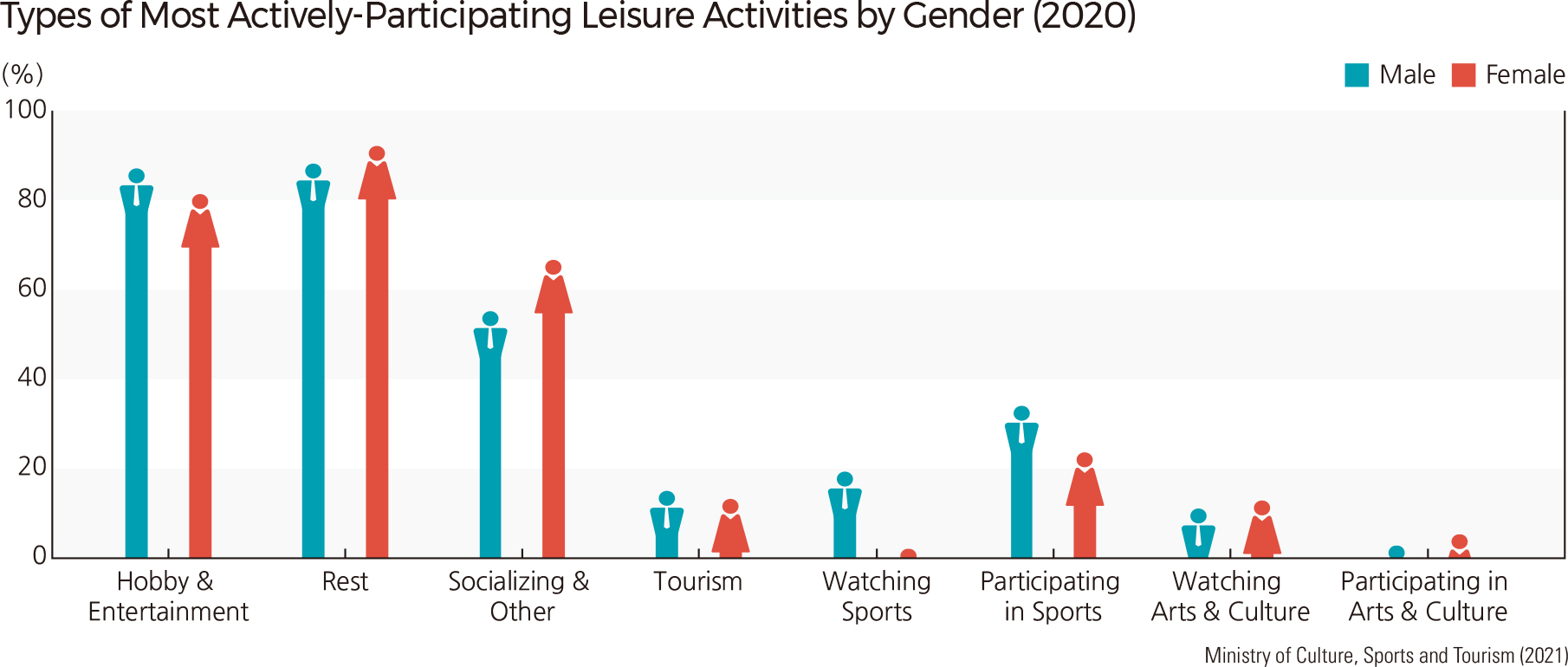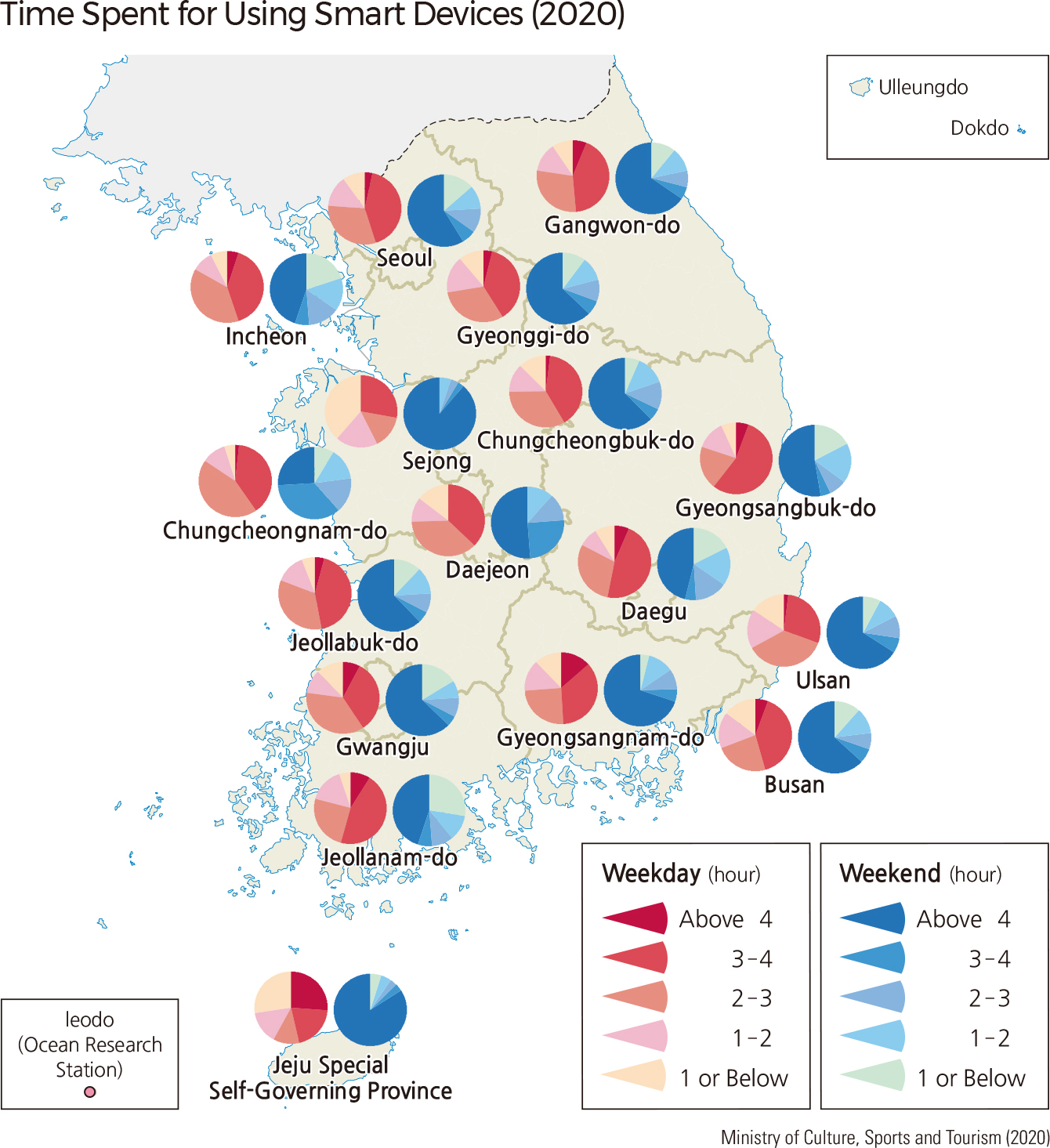Comprehensive Edition 2022
Koreans’ leisure time and activities have diversified following the introduction of a five-day workweek in the early 2000s. Spending on leisure has increased along with income and a changing perception of leisure. As a result, opportunities to actively participate in leisure activities, such as joining clubs, have expanded, and domestic and international travel is more popular.
Central and local governments have also made a great effort to improve the Korean citizens’ quality of life through increased participation in leisure activities. Governmental agencies have enhanced public access to leisure by building and managing facilities such as concert halls, libraries, parks, public sports facilities, and village sports facilities. In addition, governmental agencies have built many walking tour routes and bicycle paths. They have developed websites and mobile applications to provide relevant information. Furthermore, each local government has provided shared bicycles and improved public transportation routes and facilities to enhance accessibility to leisure spaces.
Koreans over age 10 enjoy an average of four hours and forty-five minutes of leisure time every day. The average Korean goes to sleep at 11:30 pm and wakes up around 7 am. Koreans generally engage in activities such as watching TV or using the Internet on weekdays and more active pursuits, like traveling and exercising, on weekends.
In recent years, Korean society has experienced social transitions, including changes in religious and family life. As the fertility rate decreases, families have become smaller. The average age of marriage has increased, and divorce has also become more common. With the demographic and social changes, opinions on the family, marriage, and divorce are shifting. Various social changes, including ideological and religious disagreements, economic inequality, intergenerational strife, and regional distinctiveness, play a role in shaping population patterns. Continuous efforts are being made to minimize cultural conflict and reduce inequalities in society. The recent walking and cycling craze is an important part of the Korean leisure culture. Many walking and cycling routes have been created across the country that enable people to experience local culture, ecology, landscapes, forests, and wildflowers. For example, Nuri-gil, a scenic stroll through an urban conservation area, has become popular nationally. In most cities and provinces, public bicycles—commissioned or directly managed—are available. People can pick up bicycles at rental stations using transportation cards or mobile applications. In the past, Korea’s mountainous terrain discouraged many people from touring the country by bicycle. However, in recent years, many bicycle trails have been created along major rivers and coasts. Local governments have also built bicycle trails themed on history, nature, and culture. As a result, touring these bicycle trails and crossing the Korean territory using bicycle roads has become popular. |








